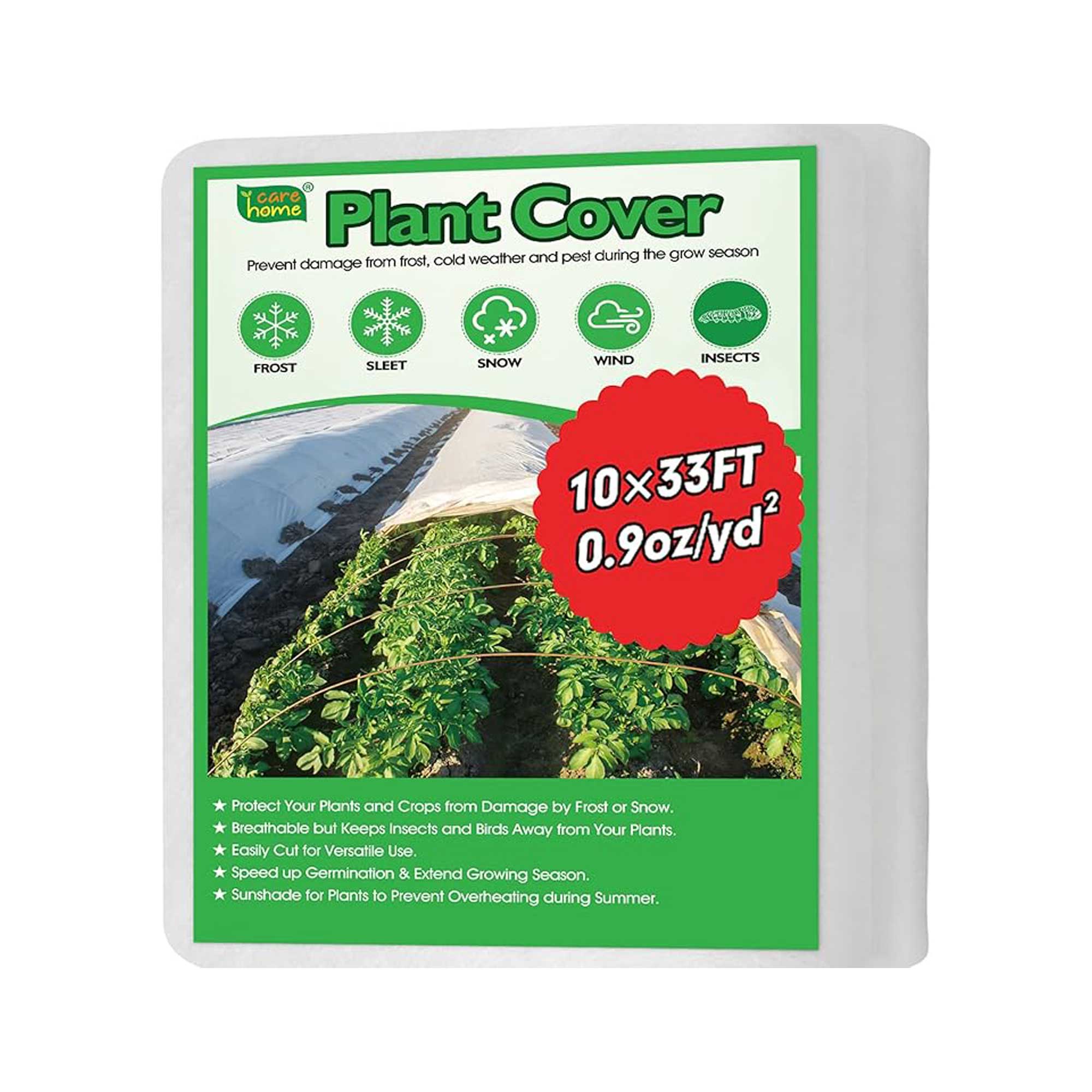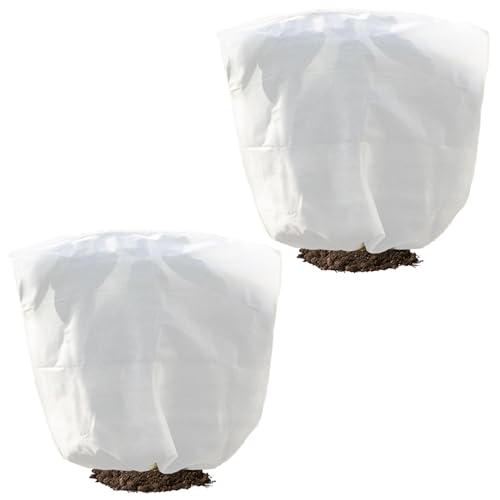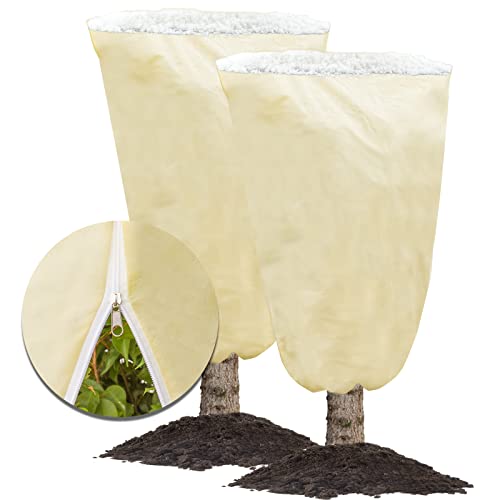Should you remove snow from plants? Our guide has all the winter gardening advice you need to know
Removing snow and ice can sometimes do more harm than good

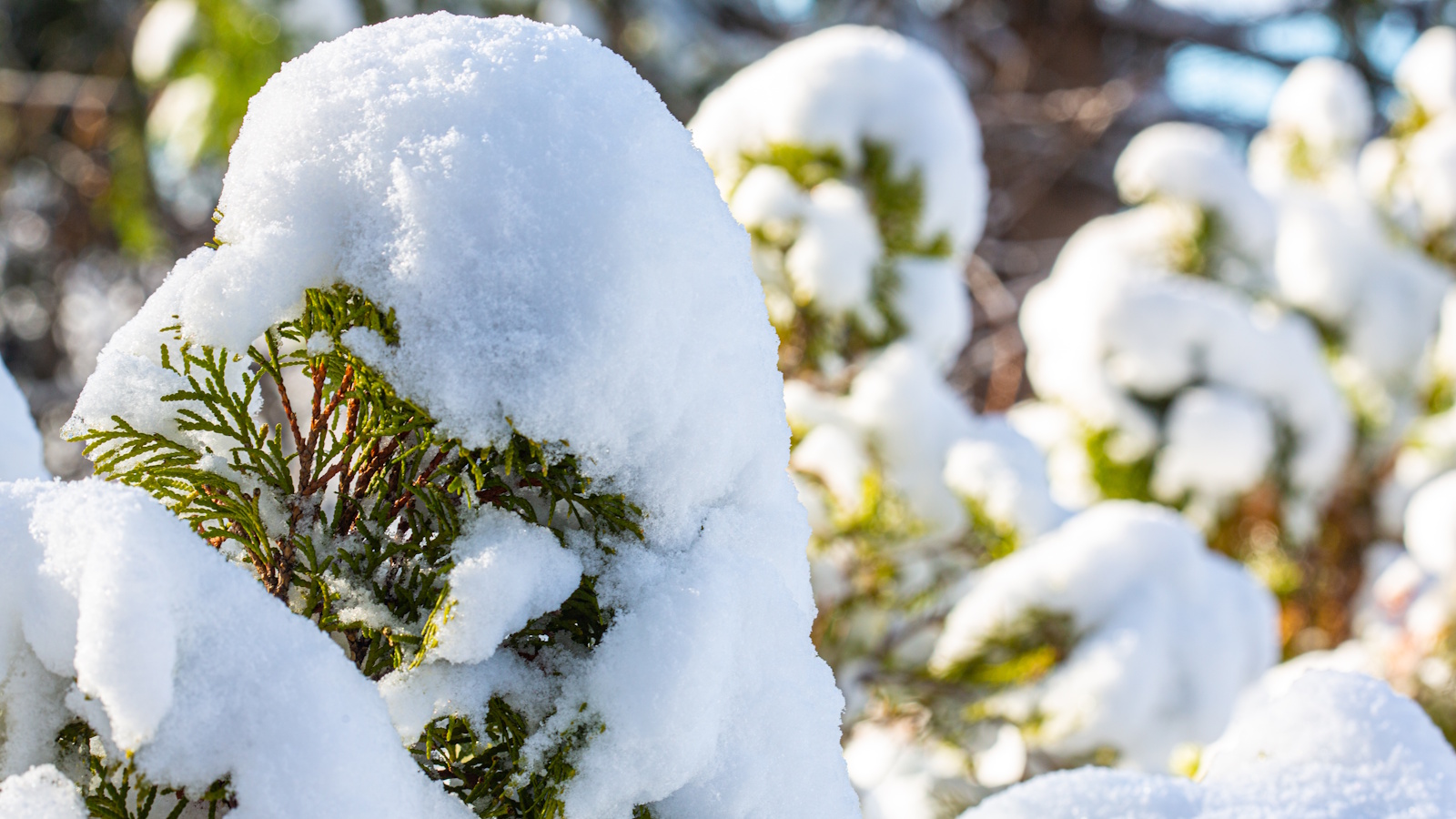
While you might enjoy seeing snowfall in the winter months, the cold weather can pose risks for plants. Frost, ice and snow can indeed prove challenging for shrubs and trees, particularly in northern regions where cold snaps last for many weeks or even months.
So, should you intervene to remove snow from plants, or leave nature to take its course? The answer depends on the type of snow and the plants in question. The approach to plant care will be determined by what you grow and how heavy the snow is. For example, evergreen trees that retain their foliage are at greater risk during winter as opposed to deciduous species, with their canopies collecting large amounts of heavy snow.
Here, I reveal all you need to know about dealing with snow in the garden, helping to keep your winter plants safe so that they return better than ever next year.

Should you remove snow from plants?
Your approach to plant care in winter will depend on where you live and your US hardiness zone. In colder, northern regions, where frost, ice and snowfall are more common, tree and plant care will be more important than in mild and warm regions with far fewer risks during winter.
Do not remove light snow from plants
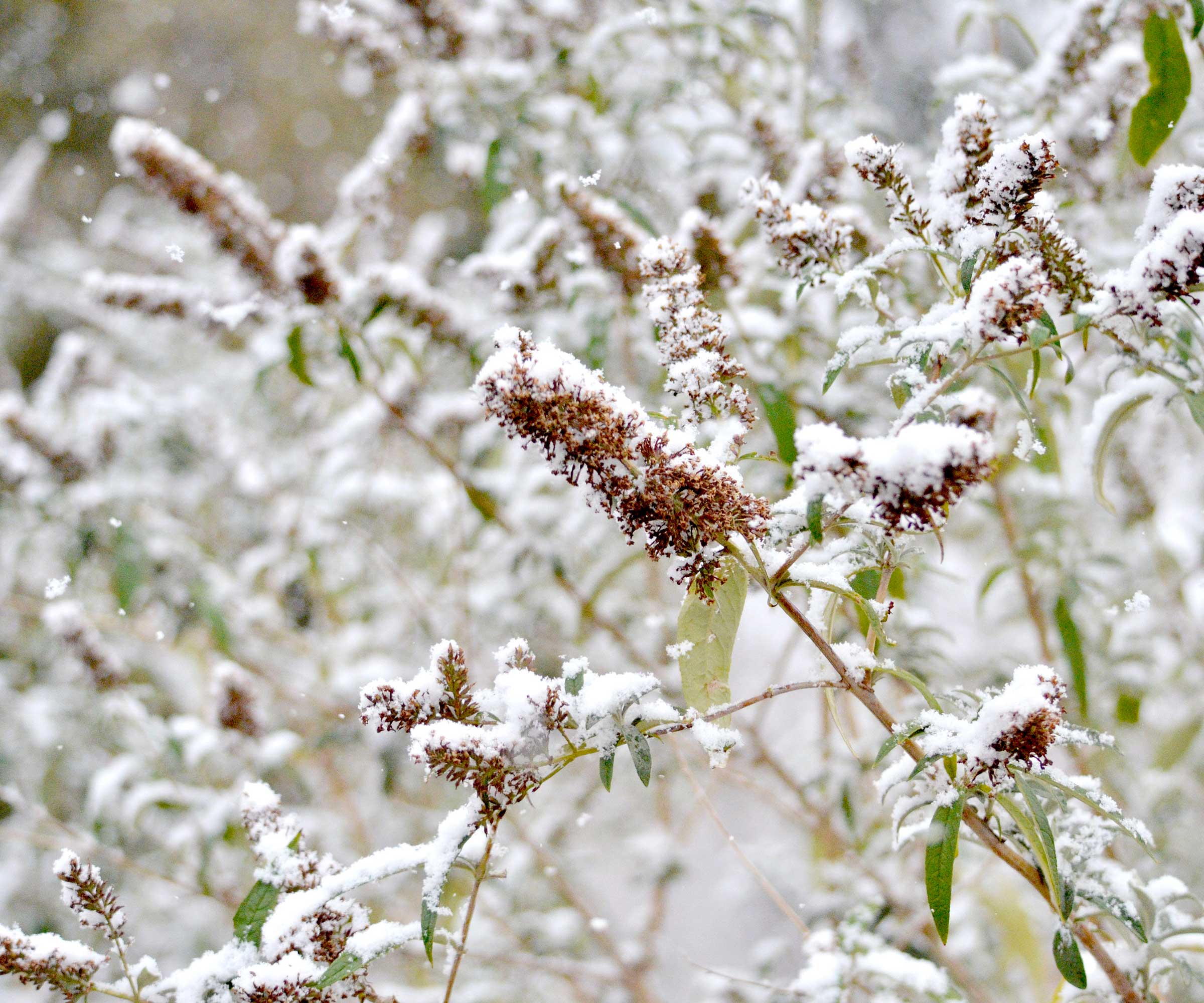
You do not need to protect every plant from frost and snow. Most if not all of your plants will be hardy, meaning they can tolerate light snowfall.
Light snow, approximately one or two inches, is mostly harmless to plants, and can actually benefit trees and shrubs in your yard. This is because a small layer of snowfall can act like a natural layer of insulation, thereby protecting the roots of perennials and other plants that are dormant during the cold months of winter.
Removing this layer of snow when it is not necessary can expose your plants to harsh conditions and freezing temperatures. So, if the snow is powdery and light, it’s best to sit back and leave it alone, enjoying the winter garden from the comfort of your home.
Design expertise in your inbox – from inspiring decorating ideas and beautiful celebrity homes to practical gardening advice and shopping round-ups.
Keep an eye on evergreens during heavy snow
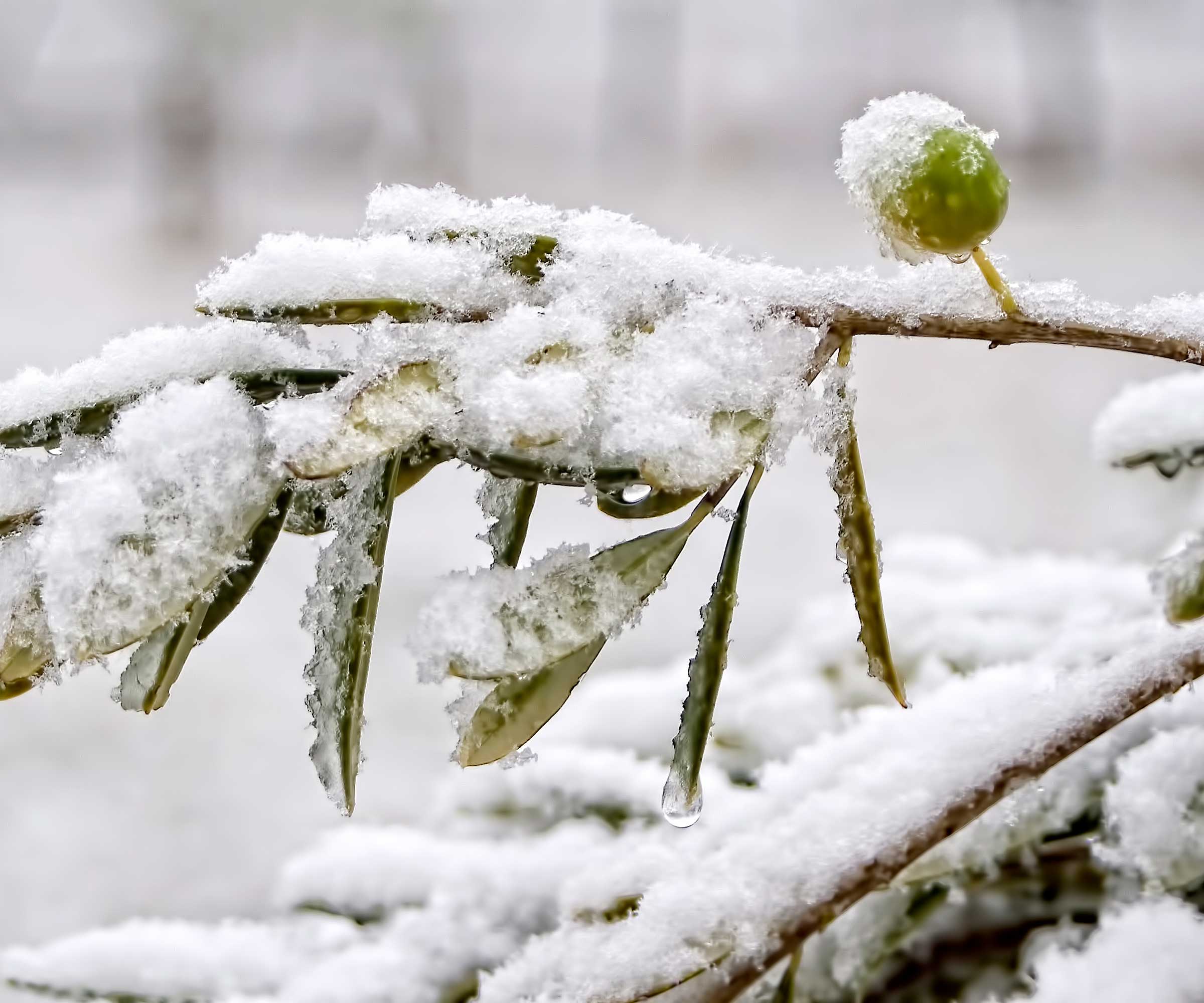
Heavy snow, however, can prove challenging for plants. Evergreen trees and evergreen shrubs are more at risk, as their year-round foliage can collect large amounts of snow. Over time, this build-up can weigh a significant amount, thereby threatening to bend or snap branches.
So, if a heavy snowfall has covered your yard with a thick blanket of white, it is a good idea to monitor your evergreen plants. All that is required is to simply brush the snow off by hand or with a broom, gently brushing upwards to minimize any further damage to branches.
For an even simpler method, you can gently shake the branches, but doing so can cause unnecessary stress to your shrubs and trees, particularly when younger and not yet established. In addition, branches can be brittle during the winter months, so shaking your tree could end up causing damage.
While it can seem like a chore and another job to add to the winter gardening checklist, it is often best to employ the little and often mindset, which can make removal easier and minimize the amount of snow collecting on the canopy of shrubs and trees.
Protect plants under the roofline
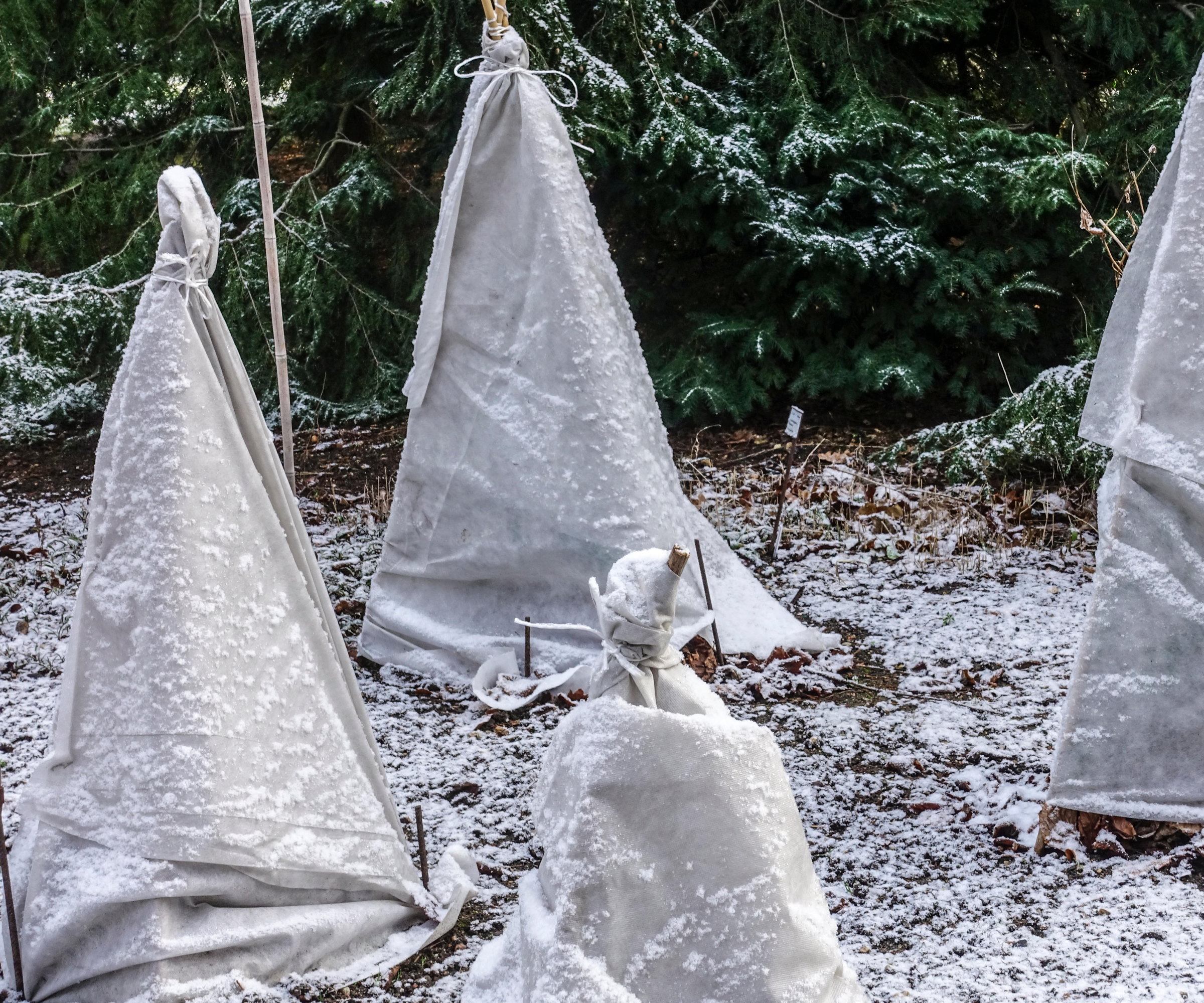
If you have any shrubs or trees situated beneath the roofline of your home, whether deciduous or evergreen, these plants are at risk during periods of heavy snow.
Large amounts of snow can settle on sloping roofs, but when the temperature rises, this snow or ice will melt and can slide off the roof, thereby crushing any plants that are positioned directly underneath.
To protect these plants, consider creating temporary barriers, such as staking burlap or using protective frost cloth for plants. Using bamboo canes, hazel poles or sticks, you can create a temporary tent-like structure that can help to minimize the impact of snow dropping from the roof above. While unsightly, this can help to protect your prized plants and avoid any damage to large branches.
FAQs
Can festoon lights protect my shrubs and trees from snow?
While you can use lights to protect shrubs and trees in winter, there are certain rules to remember when doing so. Many people like to use lights to protect palm trees, for example, but you must always use non-LED bulbs as well as ensure the lights do not touch the foliage. It is true that festoon lights and Christmas lights can provide some warmth and protection, preventing the build-up of snow, but doing so for an extended period of time is not advisable.
The same rules apply to potted plants. While most shrubs and trees will tolerate light snowfall, keep an eye on your evergreen container plants when heavy snow arrives. If possible, consider moving potted plants near to the home, to provide a little shelter and warmth during the colder months.
For more garden inspiration and advice, see our guide to feeding birds in winter, to keep songbirds and woodpeckers safe and well-nourished during December, January and February.

Thomas is a Content Editor within the Gardens Team at Homes and Gardens. He has worked as a professional gardener for both public spaces and private estates, specializing in productive gardening, growing food and flowers. Trained in Horticulture at the Garden Museum, he has written on gardening and garden history for various publications, including The English Garden, Gardens Illustrated, Hortus, The London Gardener and Bloom. He has co-authored a Lonely Planet travel book, The Tree Atlas, due out in 2024.
